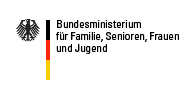Gender Mainstreaming – definition within an organization and goals
Gender Mainstreaming – definition within an organization and goals
Gender Mainstreaming (GM) is a strategy for pushing through actual equal treatment of the genders. At the outset of implementation of GM in an organization it is important to concretize this first, somewhat abstract understanding of what the strategy GM means for the organization. The organization’s top management and members should therefore reach agreement as to what GM means as a strategy in their organization and for their areas of work and how GM can be bindingly established. For example, in an implementation concept and/or within a guiding principle or charter.
The process of reaching agreement on GM is accompanied by the setting of goals. If people do not know where the ship is headed, they will not be able to agree on the route and the measures that are needed. Abstract gender equality goals, such as equal participation, non-discrimination and genuine freedom of choice, must be made specific for each organization. What, for example, does equal participation or access for women and for men mean for a training institution in the training they offer taking account of existing gender-specific segregation in the employment market?
The future can moreover be given a better shape if the present situation of the organization is considered and taken into account as the starting point for further action. It is therefore worth analyzing the status quo of the organization with regard to gender equality before setting any goals.
When goals are being set, a distinction should be drawn between strategic goals for the organization as a whole and operative goals for individual work areas. Strategic goals are as a rule envisaged over longer periods of time and set the framework for the actions of the organization and its staff. Operative goals translate the strategic goals into more specific individual goals for smaller working units. For example, the strategic goal of increasing the numbers of the underrepresented gender at all levels of advancement can be made more specific by the operative goal of training for management staff in discrimination-free evaluation.
In the formulation of goals, the SMART method has proved helpful. According to this method, aims should be specific, measurable, attractive and realistic and should be achieved within a certain time.
Every organization must develop goals within the context of implementing GM. There is no generally-applicable catalogue of goals that can be used. Such an organization-specific process has the advantage of being able to profitably tie in the existing situation of the organization and the organization’s culture to the development of goals.
Once the goals have been jointly formulated, they should be put in writing. A useful way of doing this is to draw up an implementation concept or an agreement of goals.





